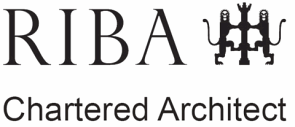Energy Efficient Home Design – An Architect’s Guide
With ever increasing energy costs and pressing concerns over climate change, more and more clients are asking for energy efficiency to be a key consideration when designing their home.
But with so much information available, as well as the up front expense of installing energy efficient solutions, where do you start?
In this blog, we’ll walk you through some of the key factors to consider when designing an energy efficient home.
Why design an energy efficient home?
First things first – why are so many people keen to design an energy efficient home?
Most clients who are looking to invest in their home want to ensure they do everything they can to future-proof their home. Looking at ways to reduce the environmental impact of both the build and the ongoing costs of running the home is one of the best ways to achieve this.
With a little investment during the build, it is entirely possible to dramatically cut your monthly energy bills. If you’d like to get specific about the savings, our sister company Energy Audits UK can help you to identify the most suitable energy efficient solution for your home, as well as an in-depth analysis of the payback period. This will help you to understand if the savings are worth the initial investment in your individual case.
One of the other advantages of an energy efficient home is that it becomes a comfortable home. Intelligent and thoughtful design can help to create a stable indoor temperature without fluctuation – regardless of the seasonal weather patterns that we enjoy here in the UK.
Designing an eco efficient home – where do you start?
Whilst many of us are familiar with heat pumps or solar panels, the real work in designing an energy efficient home starts with the local climate and the surrounding environment.
Is the orientation of the plot beneficial to capturing sunlight? Is there anything within the plot to provide natural shading or buffers to prevent overheating?
As architects, it is our job to maximise the potential of these environmental factors and how they can work together to heat, cool and light the home – therefore reducing the reliance on artificial forms of energy.
Examples include:
- Optimising the orientation of the windows to maximise daylight and ventilation.
- The use of thermal mass materials, such as concrete, stone or brick, to absorb, store and release heat.
- Roof overhangs to reduce overheating.
- Appropriate insulation and airtight construction to maintain thermal stability, alongside ventilation to create airflow and prevent too much humidity.
- Zoning the floor plan to direct energy appropriately around the home. For example – minimising energy use in rarely used areas.
Building an energy efficient home
Creating an airtight build that is well insulated is critical for an eco-friendly build and will also help to achieve that all important comfortable indoor environment.
The building must be airtight to minimise unwanted air leaks, along with high performing insulation to slow down the transfer of heat though walls, roofs and floors. This will essentially help to prevent heat loss in the colder months, and heat gain in the warmer months.
The result? A reduction in the building’s carbon footprint, lower energy bills, and healthier indoor air quality.
Window choice and placement is also important. Your choice of windows goes well beyond the aesthetics and is actually a strategic design element.
Energy efficient glazing options can help to regulate heat transfer by maximizing natural light whilst also reducing heat loss during the cooler months, and solar gain the the summer period.
As architects, we also give a great deal of consideration to the placement of windows. Larger windows that have a south facing position will capture the solar heat, but if this is going to be too much for the summer months, we can also design in shading mechanisms to prevent overheating.
Choosing a renewable energy system for your eco build
Whilst much of what we have covered so far is considered as part of the fabric of the build, we will also look at the most suitable form of energy efficient technology to run the property.
Fortunately, there are a great number of sustainable ways to power your energy efficient home, depending on budget, local climate and the way in which the house has been designed.
Solar panels or wind turbines are both excellent renewable energy systems that will enable you to generate your own electricity on-site. When paired with a battery, you can essentially store the energy for use at a later date, further increasing your independence from the main grid.
Heat pumps, either air-source of ground-source, provide heating and cooling with minimal electricity use. We can also look at Mechanical ventilation with heat recovery (MVHR) systems to ensure fresh, filtered air and improve the overall air quality.
The key is choosing the right system for your build, particularly as the initial investment is high. Installing a system that doesn’t quite suit your property will lead to greater problems down the line, rather than the lower monthly energy bills you were hoping for.
Here at Taylor and Co Architect we have a partnership with Energy Audit – their team of independent energy assessors will use their energy expertise to calculate which option is most suitable for your property, including payback periods, so you have total peace of mind that your investment will be worth it.
Conclusion
Whilst there is a great deal to consider, designing and building an energy efficient home is incredibly exciting, and with the technology advancing at such a rate, there’s never been a better time to invest in this kind of build.
If you’d like to discuss the design process in more detail, please get in touch with Taylor and Co Architects today.





